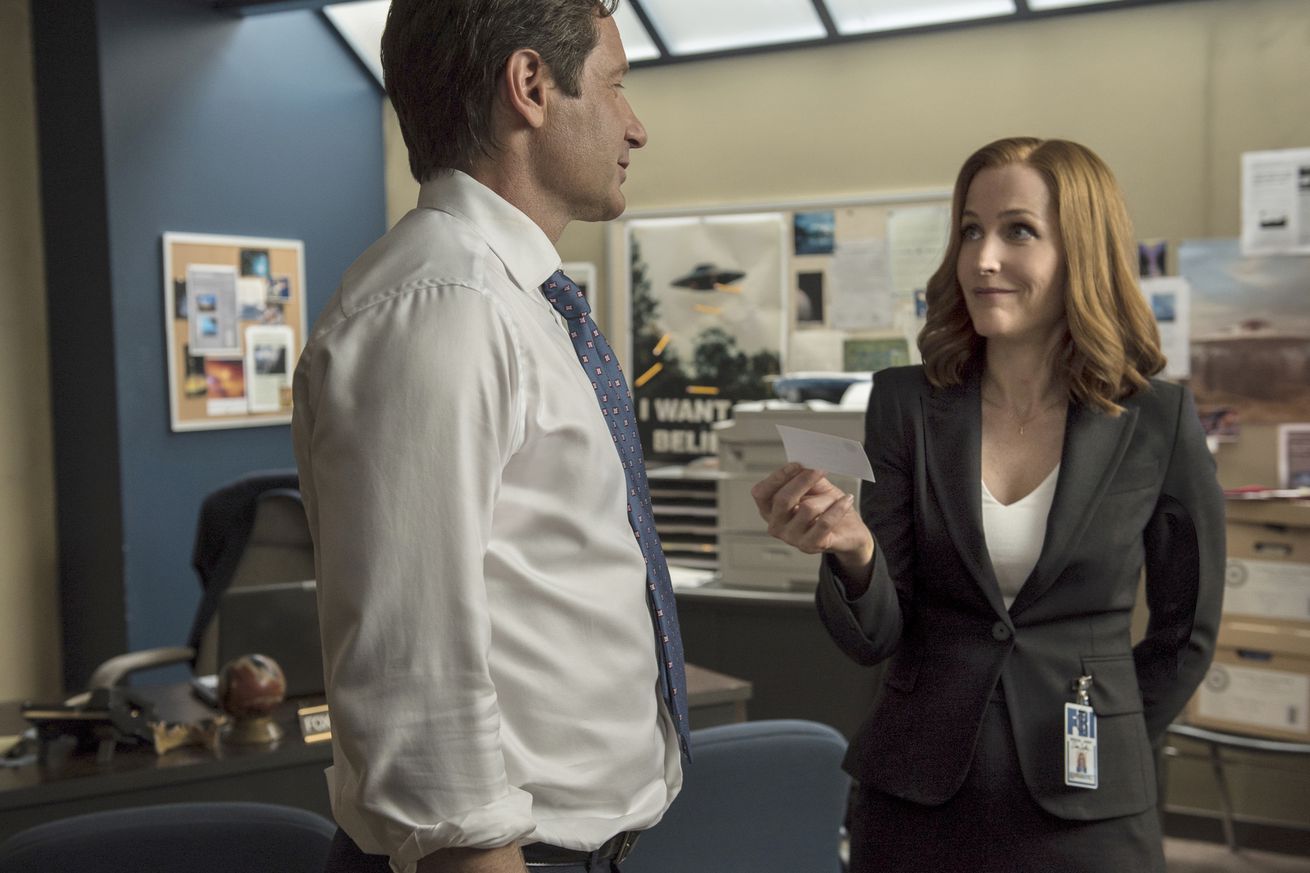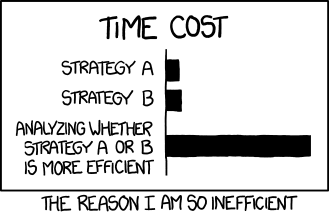
Chris Carter has great ideas. He increasingly struggles to execute them.
Someone needs to save The X-Files from itself.
Okay, it's not in any imminent danger of ending, as it has been in the past. The recently concluded six-episode miniseries posted strong ratings (though they trended downward), so there will likely be more episodes at some point. And the core of the show is still strong. David Duchovny and Gillian Anderson are as terrific together as ever, and the miniseries even produced one incredibly strong installment in "Mulder and Scully Meet the Were-Monster."
The problem is that even though the miniseries had its moments, fully half of it was an absolute disaster, with three episodes that served as reminders of why the show eventually left the air in the first place.
The season premiere and finale both attempted to reinvent The X-Files' alien conspiracy and only revealed how threadbare that whole story had become. Meanwhile, the fifth episode — "Babylon" — was only saved by its status as a fascinating misfire, which tried to engender sympathy for Islamic terrorists and ended up doing roughly the opposite.
And all three of those episodes have one big thing in common — they were written and directed by series creator Chris Carter. Who must be stopped.
It wasn't always like this!
/cdn0.vox-cdn.com/uploads/chorus_asset/file/6096529/XF_sc3031_0051_hires1.jpg) Fox
Fox
Carter was never the strongest writer on his own show, but he was frequently at least a competent one in the show's first several seasons. And his direction was often terrific, especially in the black-and-white comedy "The Post-Modern Prometheus" (season five) and "Triangle" (season six), an episode that seems to consist of several very long, uninterrupted shots.
He's also always been a tremendous ideas man. The very concept of The X-Files is beautiful and elegant in its simplicity. It's one of the great TV premises of all time, and it's elastic enough to theoretically run forever.
Even in the miniseries, you can see that Carter still has good ideas. Building the new conspiracy from the ruins of the old one was a potent way of commenting on the existence of The X-Files as a miniseries, built atop the ruins of the old show. And his eye for casting remains — Robbie Amell and Lauren Ambrose as a sort of new Mulder and Scully duo were an inspired pairing.
But where Carter increasingly falls apart is in the execution of his good ideas. His writing has always trended toward the overly expository, but now exposition is all it is. His direction has fared better, but even in that he's going through the motions. And while Amell and Ambrose were great actors for the roles they played, the roles themselves ended up being nothing to write home about.
Even if you look back at Carter's '90s career, his best ideas usually emerged when others were helping steer the ship. The X-Files' writers' room was full of legendary scribes, while his follow-up series, Millennium, was at its best in its second season, when Carter stepped back and Glen Morgan and James Wong took over. (Carter returned for Millennium's third — and worst — season.)
None of this means Carter's work is without merit — after all, he created The X-Files. But sometimes things get lost between his head and the screen, especially if nobody else is around to help channel his ideas into a form that makes sense as a story.
So the best approach here is simple: Let Carter do what he does best by coming up with ideas. Then, whenever possible, hire others to shepherd those ideas to the screen.
A modest proposal for the future of The X-Files
/cdn0.vox-cdn.com/uploads/chorus_asset/file/6096531/XF_BTS_0251_hires1.jpg) Fox
Fox
Realistically, Chris Carter is never going to leave The X-Files entirely. It's his baby, and TV networks don't usually like changing captains on a hit show, so long as showrunners are turning things in on time and on budget. Also, it's highly unlikely that the alien conspiracy storyline will ever go away — even if it's a horrible mess.
But Carter probably shouldn't be writing and directing fully half of any future X-Files miniseries that happen. When the series was doing 22 to 25 episodes per season, Carter realistically couldn't do that. However, with a much more relaxed shooting schedule on the recent miniseries, he was able to, and that only further exposed some of the weaknesses in his work that have always been present.
My proposal would be to let Carter stick around but hire someone to help him out as a sort of guardian of the conspiracy storyline (a role that writer Frank Spotnitz — now on Amazon's The Man in the High Castle — used to fill on the original series). "Babylon" was weird enough to make me think Carter might still strike gold now and then.
He mentioned at a press event I attended that he would love to do a musical episode, and that he has an idea for a bottle episode he's never been able to pull off (one that he might try in a theoretical season 11; the miniseries was season 10). And since I often like Carter in experimental mode, I don't have a problem with him writing and directing an hour or two of whatever form The X-Files takes next. But not half!
The odds seem pretty good that if Fox orders more X-Files, it will also order more episodes. The show won't get a full 22-episode season, but 10 or even 13 episodes don't seem out of the question. With that much space to fill, Carter will almost certainly have to bring in more writers than the skeleton crew that composed the miniseries.
Obviously, he could just rehire the many illustrious writers who produced the original nine seasons — including Breaking Bad and Better Call Saul creator Vince Gilligan, for instance.
But Carter has always had a tremendous eye for talent when it comes to writers, too. So why not do a season written half by the old guard and half by new writers — either established TV hands who love the show or brand new people that Carter recruits? There must be tons of writers out there who would be hungry for the chance.
Wouldn't you love to see an X-Files episode written by Hannibal's Bryan Fuller, or a take on the conspiracy from The Americans' Joe Weisberg and Joel Fields? Wouldn't it be interesting to explore what The X-Files might look like if it were written by a woman, or a person of color, or someone barely in their 20s, who only knows the show from binge-watching it on Netflix?
Carter, of all people, can find great writers who haven't broken into the industry just yet, and if he gets to make more X-Files, he should try to further his greatest legacy: giving lots and lots of terrific writers their biggest break.







